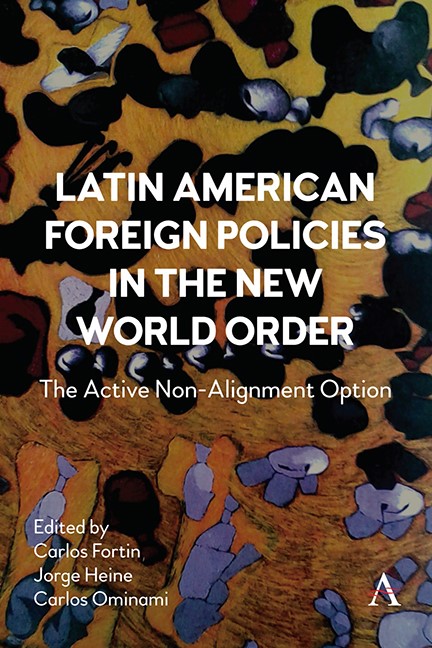Book contents
- Frontmatter
- Dedication
- Contents
- List of Tables and Figures
- Foreword
- Introduction: Active Non-Alignment (ANA) A Doctrine
- Part One The Emerging World Order
- Part Two Active Non-Alignment In The New Geopolitical Environment
- Part Three Active Non-Alignment in the New International Political Economy
- Part Four National Perspectives
- Conclusions—Implications of an Active Non-Alignment (ANA)
- Notes on Contributors
- Index
Chapter Eighteen - Peru, Autonomy, and Active Non-Alignment
Published online by Cambridge University Press: 15 November 2023
- Frontmatter
- Dedication
- Contents
- List of Tables and Figures
- Foreword
- Introduction: Active Non-Alignment (ANA) A Doctrine
- Part One The Emerging World Order
- Part Two Active Non-Alignment In The New Geopolitical Environment
- Part Three Active Non-Alignment in the New International Political Economy
- Part Four National Perspectives
- Conclusions—Implications of an Active Non-Alignment (ANA)
- Notes on Contributors
- Index
Summary
In the words of Kishore Mahbubani (2013), “In the last thirty years the world has changed more than in the previous three hundred years.” According to him, we are experiencing the “great convergence,” the result of a long process that runs throughout the twentieth century and which has led the countries of the Global South to participate in world affairs, no longer as colonies subordinate to empires, but as independent nations. In this sense, a true world order is only now emerging, since the previous ones, as Kissinger has pointed out, “were not truly global” (Kissinger 2014, 3)
This epochal change corresponds to the “end of the American world order” (Acharya 2018) and the statement that “every empire will perish” (Duroselle, 1981). Amitav Acharya considers that “this new reality will be of another type: complex, decentralized and interdependent […] a multiplex world”, defined as a world without hegemon, culturally and politically diverse, although economically connected, whose security challenges are increasingly transnational, but in which the power to break and build order is scattered and fragmented (Acharya 2018, 8). It will be like a multiplex cinema, in which the most diverse films are screened simultaneously (Tokatlian 2015).
In the complex process of emergence of this new landscape, the ranking of the countries, according to their purchasing power parity (PPP), projected to 2030 and 2050, offers the following ranking:
In other words, by the middle of the twenty-first century 10 of the main economies in the world will be made up of 4 of the 5 BRICS countries (Brazil, Russia, India, China, and South Africa), 3 will be from the West, 4 from the East. and 2 will be from Latin America. Thus, the twenty-first century heralds not only the decline of the American empire but also the advent of a world that is both post-North American and post-Western (Stuenkel 2016).
In this new era, the central actors are the United States and China. Their participation in the global GDP, in current dollars, is 44 percent of the total of US$88 trillion in 2019, with US$ 21 trillion in the case of the United States and US$14 trillion in that of China. Projections indicate that China’s GDP will equal that of the United States in 2028, as its growth rate is higher (Bloomberg 2021).
- Type
- Chapter
- Information
- Latin American Foreign Policies in the New World OrderThe Active Non-Alignment Option, pp. 239 - 250Publisher: Anthem PressPrint publication year: 2023



